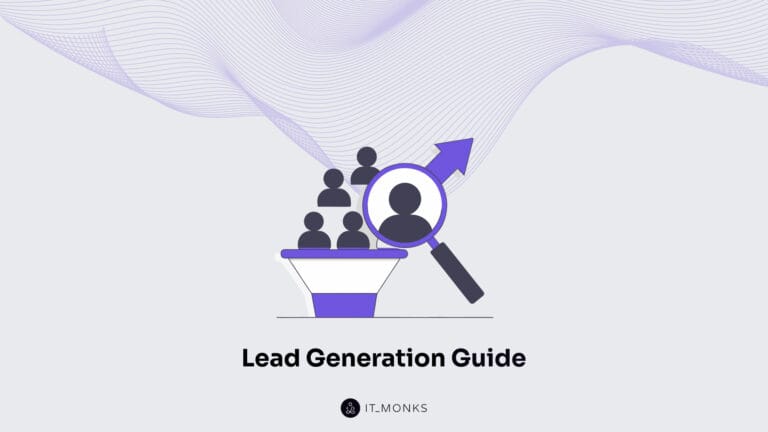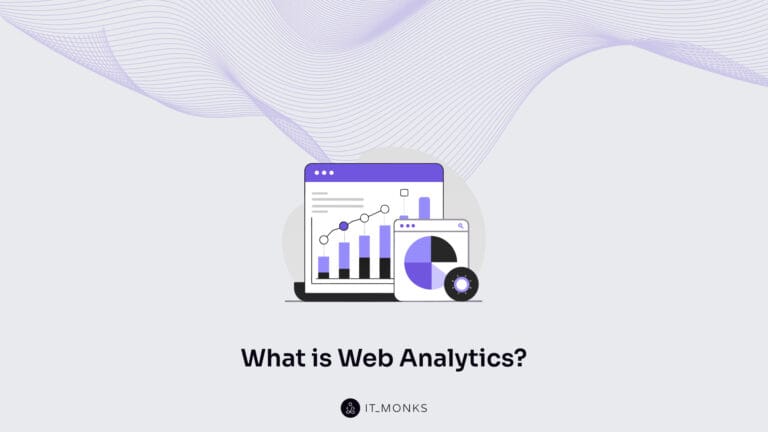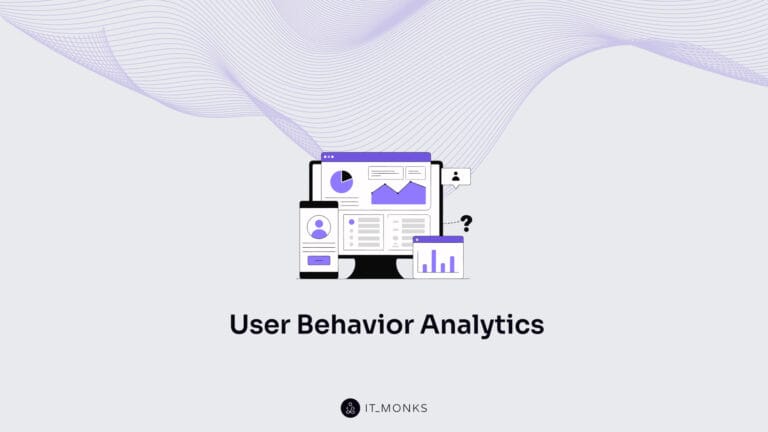WordPress for Enterprise Website Development
Table of Contents
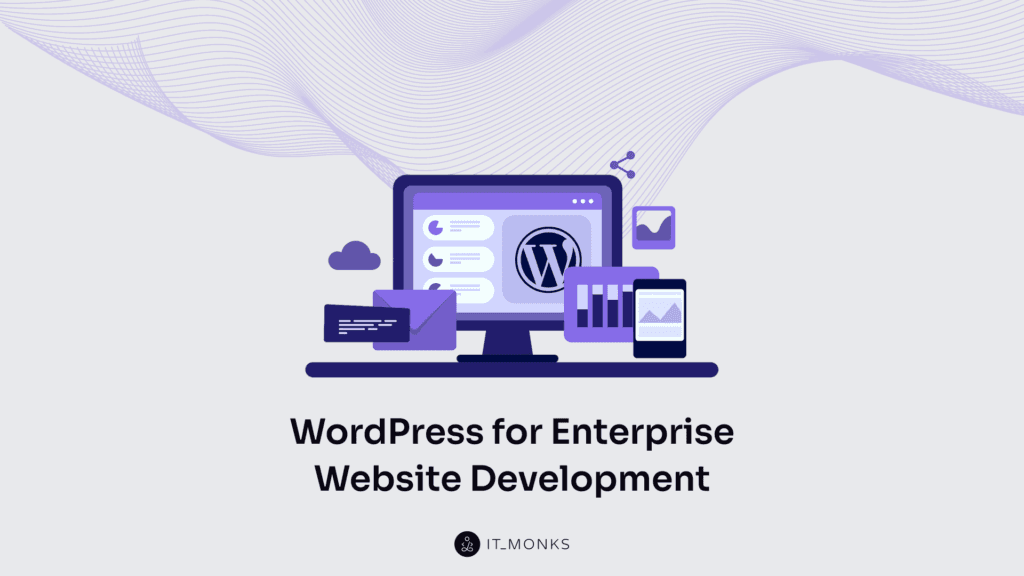
WordPress for enterprise website development is the application of the WordPress content management system within large-scale digital infrastructure environments, where high availability, governance, integration, and extensibility are required.
As an enterprise-grade CMS, WordPress functions as a modular, API-driven system capable of supporting complex architectures, editorial teams, and compliance requirements typical of enterprise-level software environments.
The enterprise use of WordPress spans corporate websites, content hubs, editorial publications, intranet platforms, microsite ecosystems, and campaign landing page platforms. These use cases rely on WordPress functioning as an enterprise-level CMS with robust content modeling, role-based editorial workflows, and integration-ready architecture.
WordPress delivers architectural flexibility through features such as custom post types, hierarchical taxonomies, and advanced field configurations, enabling structured content models suitable for schema-driven applications. Editorial governance is facilitated through workflow state design, multi-step publishing logic, and fine-grained permission control using native or extended RBAC systems.
For technology stack alignment, WordPress supports integration with APIs, middleware, and enterprise data systems through REST, GraphQL, and webhook mechanisms. These integrations enable synchronization with third-party CRMs, ERPs, and content delivery infrastructures. WordPress also supports infrastructure-level strategies, including private cloud deployment, multi-site configuration for brand portfolios, and CDN-accelerated delivery.
Enterprise support models involve structured maintenance protocols, uptime SLAs, and proactive update flows. Performance scaling is achieved via object caching layers, externalized asset storage, and stateless deployment strategies. Security considerations are addressed through enterprise identity and access management, plugin vulnerability audits, encryption practices, and compliance-aligned governance.
Evaluating WordPress within an enterprise stack involves comparing its modularity, cost of ownership, and development lifecycle to custom CMS platforms and proprietary digital experience platforms. When evaluated within the domain of enterprise software architecture, WordPress functions as a CMS application layer, integrating with broader systems of record and business logic while maintaining editorial usability and extensibility.
Enterprise Use Cases for WordPress CMS
WordPress is used in enterprise environments to deliver business-critical web solutions across a variety of organizational functions. When implemented with the right infrastructure and governance layers, it supports enterprise-grade use cases across corporate, editorial, and operational domains.
Corporate websites such as those of The Walt Disney Company, Sony Music, and Capgemini use WordPress to centralize their brand presence, support marketing strategy, and structure digital communication across global markets. The CMS supports modular page creation, brand governance, and integration with CRMs and analytics platforms, core requirements for enterprise marketing operations.
Content hubs and editorial publications like TechCrunch and The New Yorker rely on WordPress to manage high-volume content workflows with layered editorial approval. These use cases highlight the CMS’s editorial governance flexibility, templating efficiency, and structured taxonomy management to sustain large publishing teams without compromising on content control.
Intranets and internal portals are deployed by organizations like Microsoft to provide employee knowledge bases and internal content tools. WordPress supports authenticated access, custom user roles, and secure content segmentation, making it effective for internal communication and operational documentation.
Microsite ecosystems are used across multi-brand and multi-region enterprise models. Organizations such as IKEA operate localized WordPress environments to manage region-specific content under a unified brand umbrella. WordPress supports this through custom theming and permission structures across WordPress Multisite installations.
Campaign landing page platforms are built with WordPress to give marketing teams rapid deployment capabilities. Enterprise teams use pre-built component libraries and publishing workflows to ship time-sensitive microsites at scale, often tied into performance tracking and lead-gen systems.
Across all of these implementations, WordPress functions as a dynamic enterprise CMS platform that supports structured content management, editorial precision, and scalable architecture.
WordPress as an Enterprise-Level CMS Platform
WordPress is an open-source content management system built on a modular foundation. Its architecture includes themes, plugins, and native REST API access, forming a platform that adapts to structured content delivery, complex workflows, and cross-system communication. With consistent releases, an active development community, and deep compatibility with enterprise deployment standards, WordPress qualifies as a viable enterprise-level CMS platform.
An enterprise content management system must offer scalability, governance, and integration flexibility. WordPress supports multisite installations that scale across business units, product lines, or regions. Role-based access, workflow logic, and editorial review structures are implemented through native roles and extended via plugin-based control systems. Integration requirements are addressed with API endpoints, both REST and GraphQL, facilitating secure data exchange with CRMs, ERPs, and internal tools.
Enterprise-grade CMS demands support for non-standard content models. WordPress accommodates this through custom post types, field management plugins like ACF, and hierarchical taxonomies, enabling structured representations of business objects, documents, or assets. These data models are tightly coupled with editorial governance, allowing configurable states and permission layers across teams.
Security at enterprise scale requires strict control over user access, plugin approval processes, and hardened server configurations. WordPress aligns with enterprise information security (infosec) practices by supporting external authentication systems (SSO, OAuth, SAML), codebase auditability, and plugin vetting strategies. Localization and international deployment are handled through multilingual plugin ecosystems and multisite networks with region-specific configurations.
In comparison to platforms like Adobe Experience Manager or Sitecore, WordPress often enters enterprise architecture due to its faster deployment cycles, extensibility, and lower total cost of ownership. Its classification as an enterprise-level CMS platform is no longer hypothetical—it has already matured into a component of production-grade digital infrastructure across regulated, high-traffic, and mission-critical environments.
Architectural Capabilities in Enterprise WordPress Development
WordPress operates on a monolithic CMS core, but its real viability in enterprise-grade development comes from its modular architecture. The separation between the core, themes, and plugins makes it possible to design large-scale systems that adapt to enterprise needs without fracturing maintainability or governance. Enterprise WordPress development uses this architecture to segment frontend flexibility, backend extensibility, and operational workflows into clearly defined modules.
At the system level, WordPress delivers modularity through its plugin and theme architecture. Plugins encapsulate feature logic, while themes handle presentation, a separation that allows interface teams to operate independently from backend engineers. Extensibility is handled through hooks, filters, the REST API, and optionally GraphQL, enabling integration with external systems without touching core files.
Enterprise environments benefit from the separation of concerns. Templating engines decouple display logic from content structures, while Custom Post Types (CPTs) and custom taxonomies model content in a structured way. Admin roles and capabilities create isolated zones for content editors, developers, and system administrators.
Scalability is addressed through architectural patterns such as object caching, persistent storage (e.g., object storage offloads for media), and database-level query optimization. High-performance deployments use containerized services, CDN layers, and horizontal scaling via multisite configuration, especially in ecosystems managing regional or multilingual websites.
Enterprise WordPress development also depends on multisite/network support. This feature is native to WordPress and supports shared plugin and theme governance across multiple domains, while retaining site-level configuration. It underpins complex setups like franchise networks, global brand portfolios, or departmental silos.
Finally, the platform’s customizability lies in its developer APIs. These APIs interface with enterprise systems for SSO, data synchronization, or middleware communication. Version-controlled deployments, often using setups like Bedrock or Composer, align WordPress projects with enterprise software management practices, reducing drift and enforcing consistency across environments.
Enterprise Content Modeling in WordPress CMS
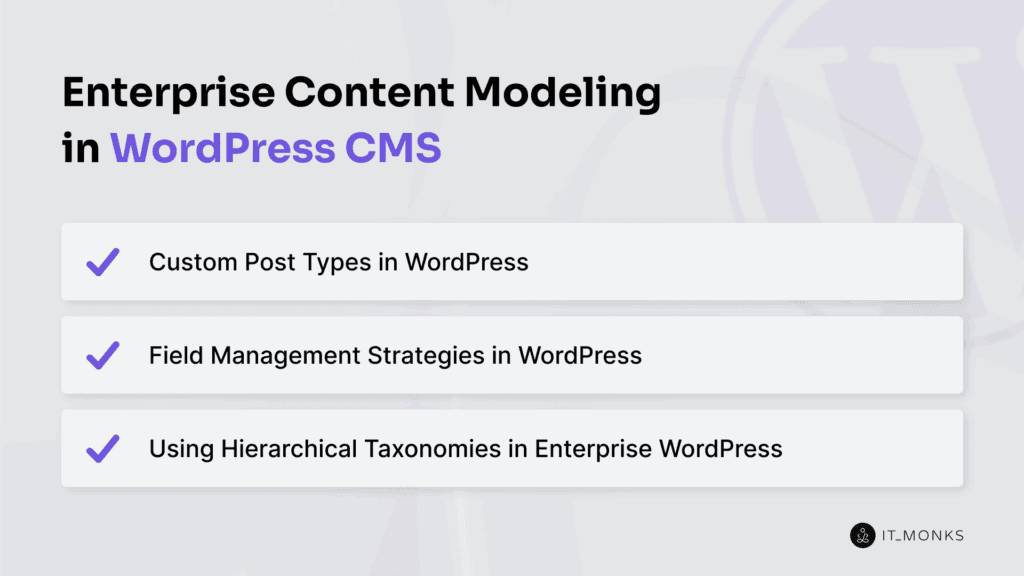
Content modeling in an enterprise WordPress context is the architectural process of defining structured entities, their attributes, and their organizational rules. It delivers content that is scalable, queryable, and semantically aligned with domain-specific search intent. For enterprise-grade deployments, modeling is the operational layer that makes governance, automation, and semantic consistency achievable across thousands of assets and contributors.
In WordPress, structured content is modeled around Custom Post Types (CPTs). A CPT is the canonical unit of content structure; it defines an entity class (e.g., “case study,” “product,” “policy”) that exists separately from standard posts or pages. These CPTs isolate content by its business function, and through their URL structure and template logic, signal its entity type to both humans and machines.
Search engines use these signals to map entity types and cluster relevance across domain topics, which improves internal linking, SERP grouping, and content classification across the site.
Attributes within these content types are controlled using field management strategies. Field management refers to the implementation of key-value pairs, or metadata, that define the internal structure of each entity. Titles, descriptions, authorship, relational links, and schema-bound data are not flat text — they are attributes with semantic boundaries.
While WordPress supports native metadata, enterprise use depends on extended field control through plugin ecosystems to enforce input logic, relational integrity, and multilingual mapping. These fields not only store values but also produce predictable output templates, filter queries, and differentiate entity types in large-scale deployments.
Hierarchical taxonomies are used to group, filter, and retrieve content by logical semantic sets. A taxonomy in WordPress is a semantic organizer. In enterprise systems, hierarchies within taxonomies define context paths (e.g., “Solutions → Industry → Healthcare”) that shape navigation, search filtering, and vector-based relevance in query engines.
This organization enables templates to render content based on context, rather than content type alone — a critical feature for modular design, multisite replication, and programmatic personalization.
While WordPress offers these mechanisms natively, enterprise deployments require extensibility to meet operational scale. CPTs are defined in code, but structured governance over fields and taxonomies requires robust plugin layers, not for decoration, but to formalize content input rules, editor UI logic, and backend query availability.
Modeling content through this combined architecture reduces content ambiguity, aligns each content item with its semantic identity, and builds structured topical coverage at the system level.
Custom Post Types in WordPress
A custom post type is a registered content type in WordPress that exists alongside default types like posts and pages but is defined for a specific content model. Each custom type represents a unique entity with its own structure, taxonomies, and interface logic.
In enterprise environments, custom post types act as formalized schema units for modeling distinct business objects, such as locations, departments, white papers, or product specifications.
This separation is crucial in building maintainable site architectures that support editorial governance, structured metadata storage, and scalable templating systems. A CPT provides not just content separation but domain isolation, a necessary layer in high-volume publishing stacks where workflows, permissions, and schema definitions must remain decoupled.
The presence of CPTs enables WordPress to mirror structured data principles from content modeling systems. Each type holds attributes, repeatable fields, media objects, or taxonomic relationships. This logical separation permits modular frontend rendering pipelines. It also aligns with enterprise standards where roles, responsibilities, and content types follow formal documentation and audit rules.
CPTs contribute directly to a semantic structure for enterprise websites. They power predictable URL slugs, consistent breadcrumb trails, and named heading patterns, elements critical to building semantic link graphs. Topic-based hubs, internal linking between related entities, and filtered archive templates derive from the type separation provided by CPT logic. These clusters help search engines classify themes, associate entity contexts, and build accurate knowledge panels.
Custom post types are defined via the register_post_type() function or administrative plugins, the latter being preferable for distributed editorial teams. Strategic implementations assign specific field groups and user interfaces per post type. In multi-author setups, each CPT can define a distinct publishing flow, with states like drafting, review, legal clearance, and scheduled publication scoped only to relevant roles.
Field Management Strategies in WordPress
Field management in WordPress CMS is the extension of core content entities through metadata layers that define and enforce structured content attributes. In enterprise website development, fields act as semantic control points, configuring not just what data is captured but how it behaves across editorial, presentation, and integration layers.
In large-scale systems, field strategies aren’t optional. They standardize content modeling across hundreds or thousands of entries. Fields enforce consistency, mandate input formats, and enable logic that dictates how content is rendered or integrated. Required fields prevent publishing gaps; locked input types guard data integrity; schema-consistent fields support multilingual and multi-brand architectures at scale.
Common field types structure content around semantic clarity. Text and textarea fields house descriptions or headlines. Select menus, radio buttons, and checkboxes restrict input to predefined vocabularies, crucial for governance.
Date and time fields synchronize content with events or publishing schedules. Repeater fields model flexible lists. Media and relationship fields map internal links and surface entity-to-entity logic. Boolean fields toggle interface components, templates, or conditional features with precision.
Field logic is rarely hardcoded. Enterprises rely on infrastructure such as ACF, Pods, or a custom framework to centralize governance across their deployments.
Field data defines how templates behave, how schemas are output, and how semantic filters or faceted searches operate. Structured fields reduce editorial fatigue and support performance under load.
Using Hierarchical Taxonomies in Enterprise WordPress
A hierarchical taxonomy is a structured classification system that organizes content into parent-child relationships, creating vertical layers of meaning and grouping. In a WordPress enterprise CMS, hierarchical taxonomies are integral to how content relationships are expressed, governed, and retrieved.
Enterprise websites use hierarchical taxonomies to segment topics across departments, initiatives, or product lines. This supports clear mappings between content themes and site architecture. For instance, a nested taxonomy such as Resources > Research > White Papers enables SEO-aligned URL paths and improves both user comprehension and crawl predictability. These nested taxonomies also enhance content discoverability by acting as structural anchors for filters, breadcrumbs, and archive listings.
In technical terms, hierarchical taxonomies natively support parent-child node creation. WordPress doesn’t limit this behavior to default categories; custom taxonomies like Industries > Healthcare > Pharma can be defined and bound to any custom post type.
These hierarchies integrate with permalink structures, meaning /industry/healthcare/pharma/ becomes a queryable path tied to taxonomy logic. The relationships can be surfaced through archive templates, filter interfaces, or conditional logic in theme and API responses.
Hierarchical classification contributes directly to semantic SEO. It constructs topic clusters and assigns contextual boundaries, reducing crawl waste by grouping related assets under stable paths. It also reinforces semantic consistency across internal links and breadcrumb schemas — key signals used by search engines to interpret site structure.
At scale, these taxonomies support enterprise-grade strategies such as publishing restrictions per category, controlled editorial scopes per team, and localization paths for multi-region or multi-brand configurations.
When content must be tracked, segmented, or reported on by subject area, hierarchical taxonomies act as the underlying semantic framework for that classification system. They are core to enterprise content modeling.
Editorial Governance in Enterprise WordPress Systems
Editorial governance is the structured enforcement of content lifecycle control across enterprise WordPress CMS environments. It dictates how content is drafted, reviewed, approved, and published, using role-based rules and workflow segmentation to manage scale, compliance, and collaboration.
In enterprise contexts, this governance is essential. It prevents unauthorized publishing, reinforces content accountability, supports regulatory standards across industries like finance or healthcare, and maintains editorial consistency across departments, regions, and brands.
Three interconnected subsystems form the backbone of editorial governance in WordPress. First, workflow states in editorial processes define the stages a content item must pass through — from initial draft to scheduled publication. These states function as rule-based checkpoints, ensuring validation, peer review, and final approval occur before release.
Second, multi-step publishing logic in WordPress adds structured transitions between these states, introducing conditional behaviors, task delegation, and inter-role dependencies. Lastly, role-based permissions in enterprise WordPress segment access and responsibilities per user group, content type, and taxonomy, which keeps editorial control both distributed and accountable.
This governance architecture relies on WordPress’ native role and capability model, extended with custom workflows, hooks, and logic-based UI adjustments. Editorial responsibilities are embedded directly within the content model — e.g., long-form policy pages may require four-stage approval, while blog posts may follow a two-step cycle.
Editorial governance also drives semantic consistency. It enforces schema timing, conditional meta injection, and structured transitions that align with internal linking and reuse standards.
Workflow States in Editorial Processes
A workflow state defines a distinct phase in the editorial process of enterprise WordPress systems. Each state marks a semantic checkpoint in the publishing lifecycle and represents the current editorial status of a content item within a structured pipeline. Typical enterprise-grade workflows include:
- Draft – content is in progress; editable exclusively by the creator or assigned contributor.
- In review – queued for editorial or managerial evaluation.
- Approved for publishing – content is editorially finalized but not yet released.
- Scheduled – time-specific release defined; auto-publishing triggered at set intervals.
- Published – content is live and publicly accessible.
- Needs revision / Legal review / SEO review – intermediate custom states for enterprise-specific compliance and optimization steps.
Technically, these workflow states are handled through WordPress’s native post_status system. Custom states can be added and reflected across the admin interface through hooks and filters. State transitions are controlled by permissions and can be linked to triggers defined by roles or automated logic.
In structured editorial governance, workflow states serve as validation gates. Publishing is conditional on content meeting specific structural and semantic requirements, such as populated metadata fields or complete schema blocks. For instance, translation-ready content often depends on reaching a designated checkpoint that validates field integrity and format.
These workflow states enforce consistency, prevent incomplete or off-brand content from reaching production, and support compliance workflows. They function in close coordination with role-based permissions, where editorial authority is distributed across user roles tied to the right to transition content between states.
Multi-Step Publishing Logic in WordPress
Multi-step publishing logic in WordPress CMS is a structured progression of content states and role-specific validations that must be completed before publication occurs. Instead of treating publishing as a binary draft/publish toggle, this logic enforces a conditional, rule-based pipeline that aligns with enterprise editorial governance.
This pattern is critical in enterprise CMS environments because content often requires SEO review, legal signoff, brand compliance checks, and executive approval before going live. Each step serves as a safeguard against unauthorized or premature publication, reflecting internal hierarchies and regulatory constraints.
Common multi-step workflows in enterprise use include paths like: Draft → SEO Review → Legal Review → Final Approval → Scheduled Publish. At each stage, transitions are dependent on content state, field completion, or role-specific verification. For example, scheduled publishing may be paused until legal feedback is resolved, or rejected content may loop back to the editor with annotations for revision.
WordPress supports this logic through custom post statuses, transition hooks, and role-based access control. Field validation, such as requiring completion of metadata or taxonomy fields, can act as logic gates that block progression until all semantic conditions are met.
Workflow engines like PublishPress or Oasis Workflow are often added to extend state logic but rely on WordPress’s core capabilities: capability mapping, conditional logic through hooks, and structured data modeling.
This logic architecture is not just procedural; it enforces semantic and structural consistency. By embedding publishing gates directly into workflow logic, enterprise WordPress setups prevent incomplete, unreviewed, or semantically fragmented content from reaching production. It links editorial workflow to governance while upholding the semantic fidelity of content modeling.
Role-Based Permissions in Enterprise WordPress
Role-based permissions in enterprise WordPress is a permission architecture within the WordPress CMS that defines what specific users can do to which content objects, under controlled workflow stages, supporting editorial control and enterprise governance structures. These permissions enforce workflow enforcement and structure the content access model to align with organizational authority layers.
In default WordPress, roles include Administrator (full access), Editor (manage and publish others’ content), Author (publish own content), Contributor (submit content for review), and Subscriber (read-only).
However, enterprise governance needs surpass these coarse roles. Teams require permission boundaries tied to specific post types, fields, or taxonomies, so that, for instance, only finance staff can edit legal disclosures or only the SEO team can move a post to “SEO-Approved”.
Editorial control depends on these scoped actions. Workflow transitions can be role-restricted; some users can only move content from “Draft” to “Pending SEO”, others can only edit SEO metadata fields, and legal reviewers can only mark content “Compliance Cleared” without touching creative content.
This segmentation prevents accidental publishing, preserves workflow integrity, and supports distributed accountability across teams.
Since WordPress doesn’t natively support that granularity, enterprise teams typically extend it using custom roles and capability maps. These are often mapped by content type, taxonomy, or language region. Editors only see the fields or interface panels relevant to their responsibilities. This not only tightens content governance but also minimizes error vectors and simplifies training.
Such permission design is fundamental to scaling publishing operations without losing control. It ensures that editorial responsibility is trackable, changes are predictable, and every content interaction aligns with organizational rules and risk tolerance.
Integrating WordPress into the Enterprise Technology Stack
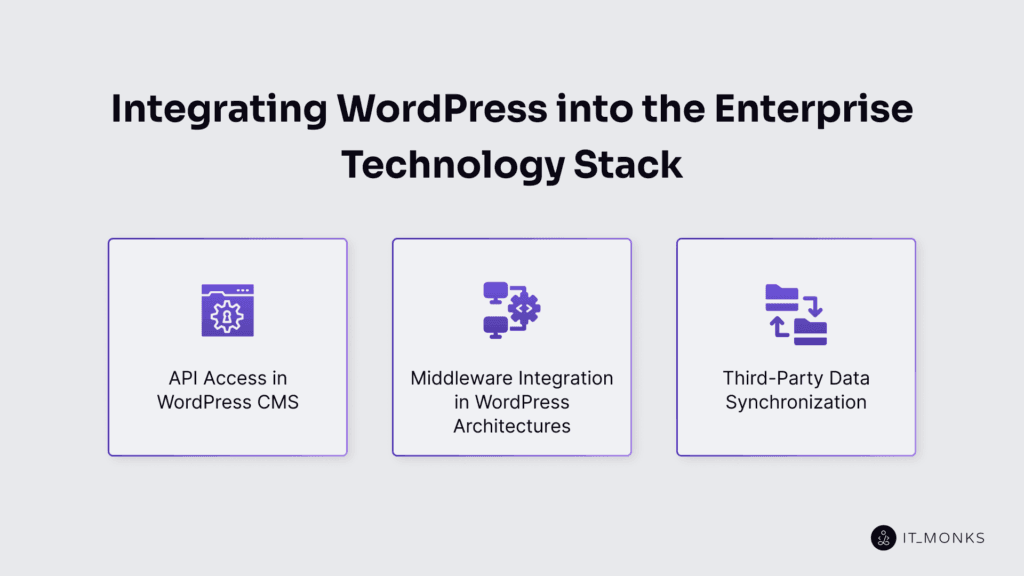
Integrating WordPress into the enterprise technology stack is a structural necessity that defines how WordPress functions as a system-level component within complex IT ecosystems. It moves beyond basic web publishing to serve as an interoperable node in enterprise CMS architecture.
Integration in this context centers on three interdependent layers: API access, middleware orchestration, and third-party data synchronization, each shaping how WordPress communicates, automates, and maintains state across distributed platforms.
APIs form the first tier of enterprise WordPress integration. WordPress provides REST and GraphQL interfaces that expose content objects, metadata, and user roles. These endpoints support programmatic access to site content for internal systems like CRMs, analytics tools, or product databases, while also consuming external data to populate headless front-ends or dynamic interfaces. This makes WordPress an active content participant in API-driven environments.
Middleware sits between WordPress and other enterprise systems, handling orchestration and process automation. This tier interprets API events into actionable workflows, syncing content drafts to review tools, triggering marketing automation based on publishing status, or linking editorial actions to product updates. Whether through iPaaS platforms like Boomi or custom logic via serverless functions, middleware enables coordinated execution across systems.
Third-party data synchronization enforces consistency across domains. WordPress frequently pulls and pushes data to systems like PIMs, DAMs, or identity providers. These connections maintain attribute parity for content assets, enforce data governance policies, and align user sessions across SSO and LDAP services. Bi-directional syncing ensures editorial and product data remain consistent regardless of system origin.
In practice, WordPress doesn’t operate in isolation inside large organizations. It exchanges data with enterprise software suites, reflects logic from orchestration layers, and participates in security and compliance domains. Integration is a foundational part of the architecture. WordPress operates as a publishing interface within a digital nervous system where systems expect structured, authenticated, and event-driven interactions.
API Access in WordPress CMS
API access in WordPress CMS is a native interface that allows external systems to interact with WordPress programmatically using structured data exchange. At its core is the built-in REST API, which supports full CRUD operations on content entities including posts, pages, custom post types, users, taxonomies, and metadata.
This REST API functions as a semantic publishing layer within enterprise architectures, providing a structured interface for data distribution and external system consumption. It allows WordPress to operate as a content provider in headless CMS setups and system pipelines, powering frontends built with JavaScript frameworks or integrating with internal dashboards, mobile apps, and data services.
The REST API is extensible, supporting custom routes, response filters, and pluggable authentication, and accommodates enterprise-grade modifications. This includes integration with OAuth providers, JWT-based workflows, and application passwords for secure access.
Endpoint permissions are tightly coupled with WordPress’s role and capability system, forming the basis for scoped data access in multi-role environments. Standard security layers such as CORS, HTTPS, field whitelisting, and rate limiting are configurable as part of hardened API governance.
Some enterprise deployments use GraphQL via plugins like WPGraphQL to facilitate highly controlled content queries, especially where React or static site generators like Gatsby or Next.js are involved.
At scale, API access positions WordPress as a service node across enterprise platforms, synchronizing with CRMs, e-commerce backends, ERPs, or powering multi-channel delivery with decoupled frontend layers.
Middleware Integration in WordPress Architectures
Middleware integration in WordPress architectures is the implementation of an abstraction layer that connects WordPress with other enterprise systems by processing and routing data between them. Middleware is used to decouple WordPress from direct API-to-API connections that become brittle and unmanageable at scale.
In enterprise WordPress environments, middleware performs critical functions like transforming incoming data formats to match WordPress post structures, enriching content with metadata, validating inputs before publishing, and enforcing business rules, such as conditional publishing based on source system logic.
It also handles queueing and throttling to protect WordPress from load spikes, and coordinates multi-step sequences (e.g., pulling assets from a DAM, tagging them with structured metadata, and pushing them to a publishing queue).
This layer supports integration across heterogeneous platforms by acting as a broker, managing routing logic, dependency resolution, and system orchestration. For example, editorial metadata from a PIM system might be merged with document content from Google Docs and structured into a WordPress custom post type with pre-assigned taxonomies.
Middleware types commonly used include iPaaS platforms, message queues, custom orchestrators, and middleware embedded within ERP, CRM, or DAM tools. These aren’t treated as tools, but as architecture patterns to maintain semantic and operational integrity across the stack.
By decoupling WordPress from direct connections and centralizing data mediation, middleware aligns enterprise CMS workflows with structured content logic, permission control, and auditability, critical for scaling and governance. It shapes not just the flow but the meaning and classification of content before it enters WordPress, ensuring semantic structure is preserved throughout publishing operations.
Third-Party Data Synchronization
Third-party data synchronization in enterprise WordPress CMS is a bi-directional, structured exchange of content and metadata between WordPress and external enterprise systems such as CRMs, ERPs, DAMs, and marketing automation platforms. This synchronization operates not only to transmit data but to uphold semantic alignment and enforce governance protocols across platforms that co-author or consume structured content.
Synchronizing external data with WordPress is essential to prevent fragmentation across enterprise ecosystems. For example, syncing product attributes from a PIM into WordPress ensures catalog consistency, while real-time CRM-based profile updates can feed into WordPress-driven personalization layers. Discrepancies in content versions, stale data, or ungoverned overrides are mitigated through managed synchronization workflows.
Directionality varies by use case: one-way sync streams data from systems like Salesforce into custom post types; two-way syncs propagate editorial changes back to ERPs or DAMs. Sync strategies span real-time (e.g., inventory levels, dynamic pricing) and scheduled batch modes (e.g., nightly taxonomy updates), each demanding schema alignment and metadata fidelity.
WordPress operates both as a consumer and provider of structured data, ingesting external object attributes into CPTs, fields, and taxonomies, and publishing structured updates back via REST or GraphQL APIs. Consistency in entity-attribute-value mappings is critical to prevent flattening or semantic loss.
This level of synchronization depends on middleware orchestration and reliable API endpoints, ensuring that enterprise WordPress functions as a federated node within a multi-system architecture.
Enterprise-Level Support for WordPress Websites
Enterprise WordPress support is a structured operations layer built around system accountability. It covers ongoing technical maintenance, real-time monitoring, SLA-backed service tiers, and regulatory-aligned operational protocols that match the complexity and uptime demands of large-scale digital environments.
At the enterprise level, support must cover far more than plugin bugs or update mishaps. Organizations require 24/7 monitored infrastructure, incident escalation paths with guaranteed response times, audit-compliant change management, and proactive disaster recovery workflows. These systems are embedded in risk governance models and tied to business continuity.
Support at this scale demands familiarity with the full WordPress stack, including server configurations, database behaviors, and performance-critical codebases. The goal is to sustain a mission-critical CMS without leaving room for silent failures or unmanaged degradation.
This support model depends on two pillars: structured technical maintenance and enforceable SLA contracts. Both are foundational for any WordPress deployment operating under enterprise-grade standards.
Support does not mean freelance patching or ticket-based plugin help. It means governing the system with protocols that reduce risk, ensure traceability, and maintain service integrity across all layers.
Technical Maintenance Strategies for WordPress Sites
Enterprise WordPress maintenance is a structured operational discipline that governs the stability, security, and performance of the platform across large-scale implementations. This involves scheduled core updates coordinated through controlled version rollouts, with each update cycle mapped to predefined release calendars.
Plugin and theme updates are executed only after regression-tested validation in staging environments, with test automation or QA confirming compatibility and functionality before production deployment.
Security patching is driven by CVE tracking and threat modeling, with prioritized remediation windows and rollback paths built into the update sequence. PHP and runtime environments are versioned and upgraded in alignment with hosting and compatibility matrices, minimizing runtime drift. Databases are maintained through regular index tuning, automated backup routines, and volume-based retention strategies.
Performance audits are conducted on a recurring basis to inspect TTFB, query load, and frontend asset distribution. Observability pipelines feed into log analysis systems, where alerts and anomalies are triaged according to impact and escalation thresholds.
All maintenance operations are subject to release governance: they are documented, traceable, and auditable under change management policies. These occur within planned release windows and are aligned with incident prevention SLAs.
Staging infrastructure is used for validation, while rollback mechanisms cover core, plugin, and theme versions to mitigate risks during deployment. Scheduled downtime follows formal change requests, and no operation proceeds without an approved maintenance window.
This framework protects semantic consistency across the system, from schema and field logic to REST APIs and headless frontend dependencies, ensuring that structural content models and integrations remain operational across cycles.
Enterprise SLA Models and Support Contracts
Enterprise SLA models and support contracts are a formalized agreement structure that defines operational guarantees, responsibilities, and enforcement mechanisms between enterprise organizations and their WordPress service providers. These frameworks are engineered to support WordPress as a critical digital asset, not as a casual publishing tool.
SLAs in this context serve to institutionalize guarantees for platform stability and responsiveness. They define fixed windows for incident response, such as 15 minutes for critical-level disruptions, and codify monthly uptime targets, typically 99.9% or higher.
Escalation chains, fix deadlines, and incident reporting requirements are encoded into these documents. Contractual penalties for SLA breaches create accountability mechanisms that satisfy legal, procurement, and compliance stakeholders.
Coverage within a WordPress-specific SLA typically spans uptime and availability monitoring, categorized response times (P1 through P4), scheduled maintenance visibility, and explicit scope around CMS bugs, hosting failures, plugin conflicts, or external API issues.
Reporting obligations often include audit logs, resolution summaries, and transparency in root cause analysis. Support availability is structured into tiers, ranging from standard business hours to 24/7 dedicated engineering response.
Support contracts outline the exact operational perimeter: whether coverage includes just the core WordPress installation or also extends to infrastructure, CDN, middleware, or custom plugin stacks. These contracts clarify which party is responsible for resolution in any given context, define billing practices, priority queuing, SLAs per issue type, and may bundle in managed services such as vulnerability scanning, release testing, or CMS administrator training.
In enterprise settings, these agreements become not just documentation, but governance infrastructure. They are risk transfer tools that authorize procurement teams to treat WordPress as a safe component in regulated digital ecosystems, equal in oversight and operational confidence to licensed CMS platforms.
Scaling Performance in Enterprise WordPress Websites
Enterprise-grade WordPress performance scaling is the engineering process of sustaining responsiveness under high concurrent load through infrastructure, caching, and execution layer control. At scale, performance equals reliability; every request is a system’s transaction.
Scaling architecture involves horizontal scaling with PHP-FPM nodes behind load balancers, database read replicas to split transactional and analytical queries, and CDN strategies for asset offloading. Object caching via Redis or Memcached minimizes database roundtrips, while persistent object cache layers prevent unnecessary regeneration of transient data structures.
Site reliability engineering practices demand observability across metrics like TTFB, PHP worker saturation, and query execution time. Load testing simulates usage spikes to expose concurrency faults before production. Caching policies, middleware routing, and API rate strategies are stress-tested and monitored with systems like New Relic or Datadog.
Content models influence query load. Complex post relationships, non-indexed meta queries, and high-cardinality taxonomies increase response times.
Securing Enterprise WordPress Installations
Enterprise WordPress security is the systematic control of vulnerabilities across application, infrastructure, and process layers to protect critical business functions, data integrity, and compliance posture. It involves more than patching plugins or toggling 2FA—it’s a controlled practice in minimizing attack surfaces across a modular stack.
Security spans the application layer (code audits, plugin vetting, least-privilege role mapping), infrastructure layer (hardened OS policies, secure permissions), network layer (WAFs, rate limits, CDN rule sets), and data layer (key encryption, SSL enforcement). Operationally, it integrates change controls, audit trails, and incident response alignment with frameworks like ISO 27001 or SOC 2.
Enterprise-grade protection involves scanning CI/CD workflows, locking deployment gates, injecting CSP headers, and maintaining structured access policies. WordPress doesn’t lack security; it demands it, especially in regulated environments or those with public accountability.
Configuring WordPress Multi-Site for Enterprise Use
WordPress multi-site is a configuration mode that creates a single codebase for managing multiple isolated or interconnected websites under one administrative umbrella. Enterprises deploy multi-site to consolidate governance, streamline deployment, and enforce uniform standards across digital properties at scale.
For enterprise scenarios, multi-site enables centralized plugin and theme control, uniform application of updates, and strict role separations, without duplicating system-level architecture.
A super-admin retains control over the global system, enforcing infrastructure-wide rules, while site-specific administrators operate within scoped boundaries. This permission hierarchy reduces operational risk and keeps brand, compliance, and development velocity aligned.
Global organizations use multi-sites to manage country-specific subdomains under a unified structure (e.g., fr.domain.com, de.domain.com). Higher education systems spin up department-level sites with shared components but localized publishing rights. Franchise models and multi-brand ecosystems rely on this setup to distribute content ownership while maintaining architectural consistency.
The configuration supports both shared and isolated taxonomies, user bases, and media libraries. Enterprises often isolate media and users per site to prevent permission bleed and ensure data segmentation.
Meanwhile, global plugin and theme restrictions enforce compliance and accessibility across every site in the network. Multi-site’s structural granularity supports robust compliance workflows by enabling editorial oversight and content governance across the network.
Because this configuration intersects with content modeling, editorial workflows, and SLA-based maintenance, it acts more like a foundational requirement than an optional enhancement in multi-touchpoint digital ecosystems. The coordination of infrastructure, governance, and user access through multi-site aligns tightly with enterprise demands for consistency, scalability, and risk reduction.
Evaluating WordPress for Your Enterprise Website Stack
Aligning WordPress with enterprise digital infrastructure requires more than checking for CMS features; it’s a matter of architectural fit, operational model, and long-term maintainability. For enterprises operating under tight compliance, performance, and governance thresholds, CMS selection must account for deep integration, multi-team collaboration, and scalable infrastructure.
Enterprise WordPress solutions perform well in content-heavy environments that benefit from modular architecture and a publish-first orientation. Its extensibility through APIs, plugin ecosystems, and headless delivery support makes it suitable for stacks built on composability. However, it’s less effective when deeply embedded workflows demand transactional consistency across systems like ERP or PIM as a primary backend.
Assessments often start with scalability, how reliably WordPress can handle high-content velocity, multi-channel delivery, and global traffic. Governance capabilities come next: editorial workflows, content approval logic, and permission hierarchies are critical for large teams. Integration feasibility is also central; WordPress must sit cleanly within data and toolchains that include CRMs, identity providers, and analytics suites.
Security, compliance (SOC2, HIPAA, etc.), and cost-efficiency shape the risk/reward profile. So does time-to-market: faster iterations and template-driven launches give WordPress an edge over bespoke systems.
When WordPress Is a Fit for Enterprise Use
WordPress is a strategic fit for enterprise use when content agility, composable architecture, rapid deployment, and editorial autonomy are prioritized over centralized control or rigid backend logic.
Enterprises operating with content-heavy environments benefit from WordPress’s mature support for custom post types, field groups, and hierarchical taxonomies. These capabilities support robust enterprise content modeling, critical for teams managing structured information across thousands of assets.
Multi-brand organizations with distributed content operations can leverage WordPress Multi-Site to enforce governance while maintaining editorial flexibility at the site level.
In composable CMS stacks, WordPress excels as a content layer, particularly when paired with external orchestration layers or headless rendering frameworks. Its REST and GraphQL API support simplifies integration with external systems, enabling it to slot into complex middleware and data pipelines without becoming a bottleneck.
Organizations with fast-paced marketing cycles, product launches, campaign microsites, and short-lived landing pages gain from WordPress’s rapid deployment capabilities. Paired with CI/CD pipelines and automation tooling, it supports scalable publishing operations without protracted dev cycles. Editorial teams gain workflow autonomy through granular role-based permissions and customizable approval states, reducing bottlenecks and allowing faster throughput.
WordPress is also a practical choice for businesses prioritizing operational cost-efficiency. Its open-source base and big plugin ecosystem lower initial licensing costs. This setup allows fast prototyping without being tied to a vendor. Enterprise support and SLAs are managed through trusted vendors..
However, WordPress may not align with requirements involving deep ERP integration, complex business logic, or strict auditability and version control mandates. Use cases involving multi-stage legal approval or regulatory compliance often exceed plugin-based governance frameworks. For ultra-secure, closed-network environments, the transparent nature of its codebase can introduce friction in security policy reviews.
Fit criteria must align with broader architectural decisions: content modeling needs, integration complexity, editorial workflows, infrastructure governance, and SLA-backed support operations. WordPress delivers value when used within these aligned vectors, especially where editorial independence and speed-to-market outweigh centralized rigidity.
WordPress vs Custom CMS and Proprietary Platforms
Enterprises evaluating WordPress should compare it with custom-built CMS systems and licensed platforms. They need to think about operations, architecture, and governance. Each option serves different enterprise demands depending on flexibility, predictability, and control requirements.
| Criteria | WordPress | Custom CMS / Proprietary Platforms |
| Time to Market | Optimized for rapid prototyping and launch | Slower deployment cycles, dependent on internal or vendor development pace |
| Total Cost of Ownership | Lower TCO due to open-source nature and broad developer ecosystem | High upfront licensing, ongoing vendor fees, and long-term maintenance costs |
| Governance | Workflow systems via plugins; adaptable, but reliant on configuration | Governance is often embedded in centralized workflows, audit logs, approval gates |
| Customization | Plugin-driven or developer-led modifications offer flexibility | Custom CMS offers full control; proprietary systems enforce rigid structures |
| Scalability | Can scale with the right infrastructure and caching strategies | Built for scaling from the ground up or purpose-optimized for enterprise load |
| Security/Compliance | Meets compliance needs with proper hardening and role control | Pre-packaged compliance modules (e.g., HIPAA, FedRAMP) in many licensed platforms |
| Support | Depends on the chosen agency/vendor or internal team | SLA-backed support, dedicated account managers, and vendor liability coverage |
WordPress trades structural rigidity for modular adaptability. It works best where speed, flexibility, and publishing are key. This includes marketing operations, campaign landing networks, and multi-brand environments. There, the teams are decentralized, and the publishing cadence is fast.
Custom-built CMSs meet needs where backend logic, legacy integrations, or business model alignment require deep system control. They’re viable for companies running complex data processing or having highly proprietary interfaces with internal systems.
Proprietary platforms often support central governance. They work well in compliance-heavy settings like regulated industries. They’re also useful for centralized IT departments or organizations that stick to one platform for long-term planning.
WordPress introduces more architectural freedom, but that freedom requires editorial discipline. It supports modular integrations and composable content models, but demands consistency in governance policies. Custom and proprietary platforms might limit flexibility. However, they reduce implementation uncertainty. This is important when workflows and roles are closely tied to business logic.
The choice depends less on preference and more on context. This includes the team’s nature, delivery speed, compliance rules, integration demands, and risk tolerance. WordPress is viable when selected based on contextual fit, not ideology.
Contact
Don't like forms?
Shoot us an email at [email protected]

